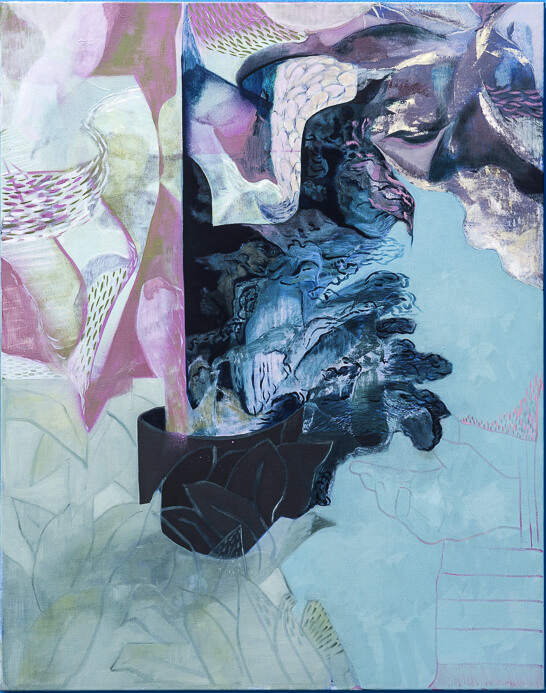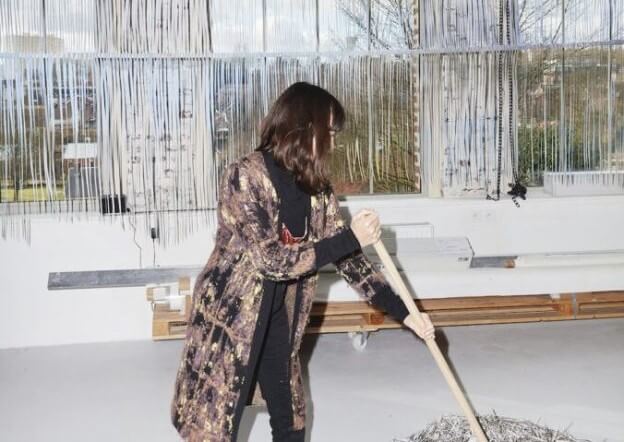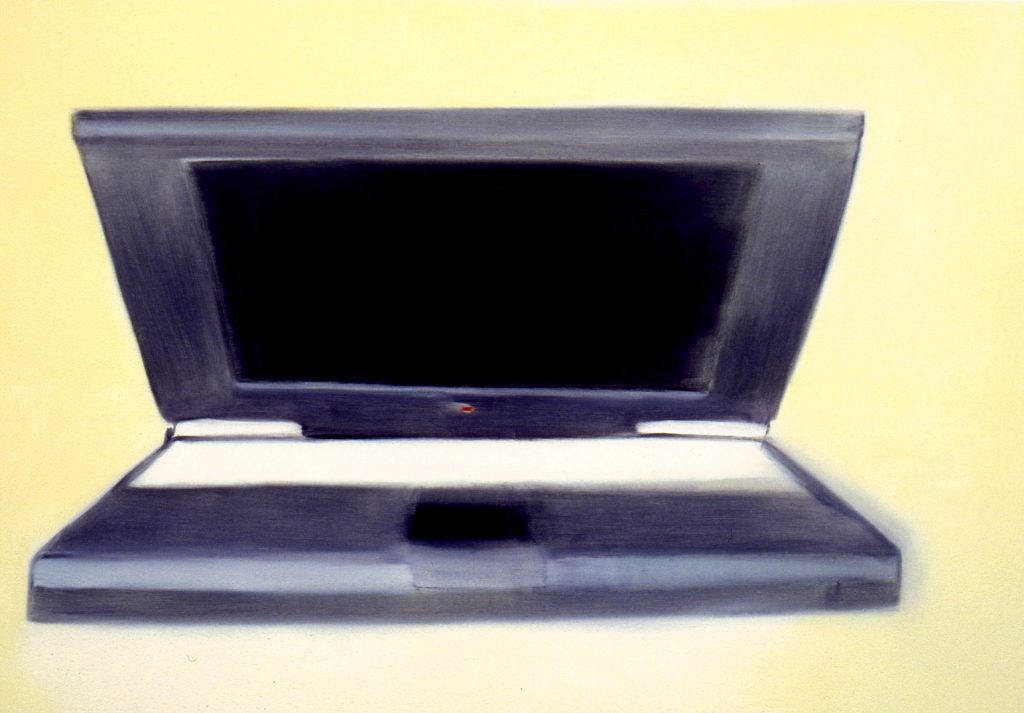Alessandro Roma: Stone Cold Beauty

There’s the kind of synthetic, pre-fabricated “beauty” you could find on Instagram, nowadays, and then there’s unmitigated, elevated beauty. Somehow, the practicing artist still has the upper hand on the relentless tide of hipsters and half-wits out there who try to claim “fine art” as their own.

There is something frightful at its core (2015)
Oil on canvas
96 x 76 cm
Courtesy of the artist and Z2o Sara Zanin Gallery, Rome
In that small oasis of time-honoured skill and dedicated craftsmanship, there is multidisciplinary artist Alessandro Roma. Born in Milan in 1977, he was educated at the Accademia di Belle Arti di Brera (Milano), and pursued further studies during a 2009 residency at the Künstlerhäuser Worpswede (near Bremen in northern Germany). He divides his time between Milan and London, having presented solo exhibitions at galleries in Paris, London, Milan, Berlin and Roma. Ahead of an upcoming museum solo at the Museo d’Arte Contemporanea di Villa Croce (Genova) this October, I managed to catch [up with] Roma during a brief weekend in London to describe his shift from canvas and textile-based work into ceramics.

Untitled (2014)
Painted terracotta
50 x 30 x 30 cm
Private collection
The first time we met was back in 2013: I had visited your studio in Mile End and it was, literally, floor-to-ceiling with delicate, garden-like canvases and curtains. Now you’ve moved into ceramics. When did this start?
I had already started working with ceramics when you came to my tiny, but bright studio. More than a garden, it seemed a greenhouse. I did a group of vase-sculptures for a solo show in Milan and another in London. I was not very practical about the material and the process, and I was quite scared but excited at the same time to work in three dimensions, instead of what I had done since in painting. I suppose the painting, then the collage, and the pattern on the fabric pushed me to try the sculpture.
Your ceramics and sculptures look like your paintings had bodies pumped into them, as if the paintings were given flesh and blood inside. Were you aiming for this kind of transition, or is this new work completely separate from the old?
I consider my work in flux, where everything is connected with what happened before. So there is a relation between the painting and this three-dimensional phase. I realised these sculptures in a pottery factory outside my studio where I use to work on my paintings, collages, books, and fabrics. So, it’s a different environment and I always try to do my best because I am surrounded by great artisans. It’s quite fun because I am kind of a beginner, but I like to be because I can play with the matter without any restrictions and bring some influence from my paintings. The place is so beautiful: Albissola, a small village in front of the sea. There is a long tradition in ceramics, Fontana, Leoncillo, Jorn and many others used to work there. It would be great to live there for a short time.

Untitled (2015)
Mixed media on paper
70 x 50 cm
Courtesy of the artist and Z2o Sara Zanin Gallery, Rome
I see lots of hash marks and fingerprints into the clay, itself. Your sculptures seem Impressionist, almost Fauvist, with the trace of the “artist’s hand.” Why did you choose this methodology?
It’s a way to create an image with many different signs, where you can depict an image that leaves open different interpretations. I thought to use these signs like colours, giving different perspectives deeper at the surface of shape. My hands are quite important; their signs are a kind of thought on the things…
Do you think small ceramics like these are still described as folk art or craft? What pushes your work into the “contemporary art” sphere?
I do not consider them small; yes, they are not big and probably much closer to a nice object on a table. In my case, I would integrate some organic and vegetable shapes into a classic object as a vase. What pushes my work into the “contemporary art” sphere? I do not know and I sincerely do not care.

One foot in the world and the other in the stillness (2016)
Installation view at Z20 Sara Zanin Gallery, Rome
There’s a rather obvious, quite lengthy history of Italian artisans crafting three-dimensional work that changes the way we look at objects (to put it mildly!) Do you think Italian contemporary artists are paying enough attention to sculpture as a medium?
There was and still is a long tradition, but a quote that I learnt from a great artisan was: The artisans without a vision can do perfect stuff, but really ugly! So it is necessary to [have] a good combination. I suppose the Italian artists are working well, but sometimes I feel too much attention [is paid] to contemporary art instead of finding their own path.














Responses